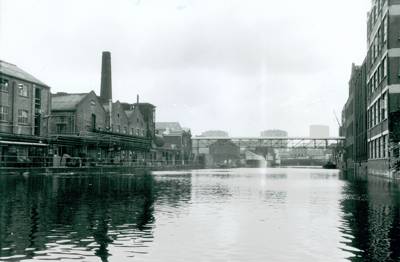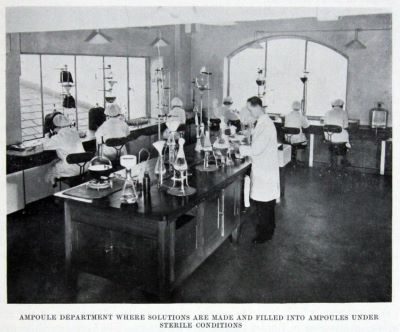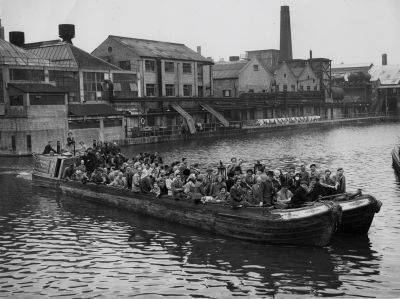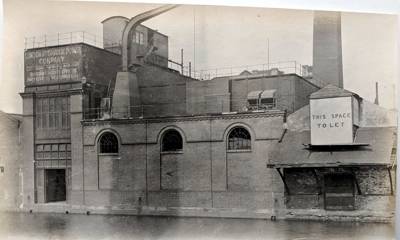
City Road, formerly called Regent’s Canal Basin, covered four acres. It ran both sides of City Road and had several arms on the east side. The first industries in the basin reflected the canal’s main purpose as an artery of commerce, transporting heavy cargo such as coal, timber and building materials. Canalside factories, wharves and warehouses were built using these same materials. Warehouses around the basin stored products such as Davenport china brought down from Stoke on Trent by boat. Pickfords specialist canal carriers may well have provided the transport or Fellows, Morton and Clayton, also based in City Road.
Below: City Road Basin, 1969, showing the footbridge

British Drug Houses dominated both sides of City Road Basin, linked briefly in the 1960s by a rickety bridge. Their first building was constructed in 1909. BDH created the world’s first synthetic Vitamin D, and made aspirin, insulin, birth control pills, vanishing cream and penicillin during the war. Celeste Chapman remembered factory smells drifted into Hanover school and: ‘they’d all be outside on the little hill by the canal having their lunch. If you worked there, you could get cod liver oil and malt cheap.’
Below: The basin in the 1820s

Jim Marshall explained that City Road Basin: ‘went beyond City Road. The Basin was a big distribution point. Pickfords was moving things up and down. Barges from the north came to here, and storage as well. Buy 100 tons of grain in the Regent’s Canal Dock, transport 50 tons, store

Basins surrounded by wharves have no towpath. Boats were poled out until tugs were introduced.


Above: View of the British Drug Houses complex from an early postcard.

Above: Laboratory inside the British Drug Houses

Above: Excursion, circa 1960. Members of the future Inland Waterways Association in boats Cario and Warwick.

The Hydraulic Power Pumping Station (above) was the only one of five in London to use canal water to supply water under pressure to operate machinery in factories and for purposes such as powering London Palladium’s revolving stage and the Tower Bridge lift. The building was demolished just before it could be listed.

Above: Inside the hydraulic power station.


